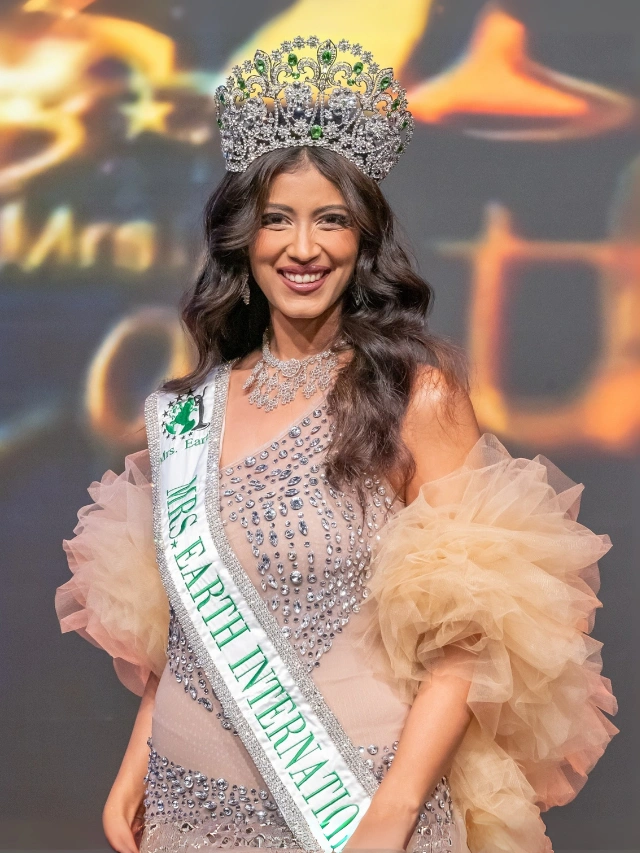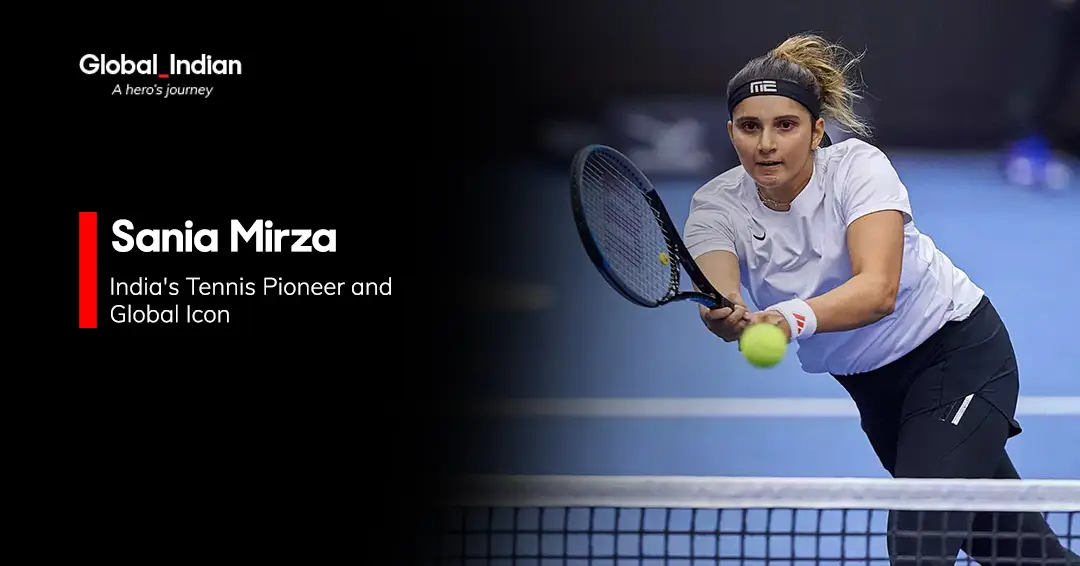
Sania Mirza
Sania Mirza’s tennis career shows evidence of remarkable excellence. She made history as the first Indian woman to reach World No. 1 in doubles and held this ranking for 91 weeks. Her incredible achievements include six Grand Slam titles – three each in women’s doubles and mixed doubles.
CEO’s | Actors | Politicians | Sports Stars
Mirza reached World No. 27 in singles, the highest ever by an Indian female player. Her success goes way beyond the numbers. She won 43 WTA doubles titles and 14 medals at major multi-sport events. Her career earnings of $7.2 million made her India’s first female tennis millionaire.
The story of Sania Mirza captures her transformation from a young talent to a global tennis icon. Her contributions changed Indian sports forever. Today, she continues to shape future champions through the Sania Mirza Tennis Academy. Her legacy has revolutionized Indian tennis and inspires athletes nationwide.
“Don’t let anyone tell you that you can’t do something, or that you don’t belong. Work hard, stay focused, and prove them wrong.”
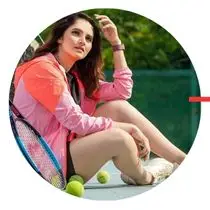
The Early Years: Sania Mirza’s Journey to Professional Tennis
Born into a sports-loving family
Sania Mirza’s tennis experience started in a family that lived and breathed sports. She was born on November 15, 1986, in Mumbai to Imran Mirza, a sports journalist, and Naseema, who worked in a printing business. Destiny had great plans for her athletic future. The family moved to Hyderabad soon after her birth, where she and her younger sister Anam grew up in a Sunni Muslim household.
The Mirza family’s sporting heritage ran deep, with cricket at its heart. “The Mirzas are a sporting family where cricket is the most popular sport. We have produced a few Test cricketers, first-class and Club level cricketers but importantly almost all of us in our immediate and extended family have played the game at some level,” her father explained. This rich athletic background created the foundations that would shape a future tennis star.
Parental support became the life-blood of Sania’s development. Her father’s dream took shape during the 1993 Wimbledon women’s final between Steffi Graf and Jana Novotna. He looked at his wife during the match and said, “What if someday Sania becomes a professional tennis player and gets to play at Wimbledon on Center Court?”. Everyone laughed at this bold idea, but her mother jumped right in, saying, “If Sania has a chance of playing at Wimbledon, I won’t leave a stone unturned to make it happen”.
First steps on the tennis court
Sania’s tennis story began at six years old at a sports club in Hyderabad. The courts were nowhere near perfect—they were made of cow dung flattened into a smooth surface and painted upon. Yet despite these basic conditions, her natural talent shone through quickly.
Her early training came from her father, before she trained under CK Bhupati (Mahesh Bhupati’s father) and later Roger Anderson. She had already shown promise as a swimmer and skater, but tennis soon became her true calling as her skills grew faster.
Success came quickly in her early years. “I started improving at tennis faster and that got my parents and coach thinking I might have a talent for it, and they began to take it seriously,” Sania remembered. She proved her talent at just eight years old by winning an under-16 state championship against a girl twice her age.
Her family’s dedication showed in countless ways during these early years. Naseema would spend up to six or seven hours in queues to get discounted train tickets for tournament circuits. She “virtually gave up spending on herself” to put their money toward Sania’s tennis expenses. Imran Mirza reflected, “Producing a top-quality tennis player from our background wasn’t easy. You needed to think out of the box”.
Junior circuit success and early recognition
Competition became real for Sania in 1999. She made her ITF junior circuit debut at 13 in the Pakistan International Junior Championship. She finished second in singles and won the doubles title with local player Nida Waseem. This kicked off an impressive junior career.
Victories started piling up. She won her first singles title on the ITF junior circuit in Mumbai in 2000. The next year, she played her first ITF senior tournament in Chandigarh and her first Junior Grand Slam at Wimbledon. Her success grew in the following year with three straight ITF 10k USD singles titles.
The world noticed Sania in 2002 when she won a mixed doubles bronze medal at the Busan Asian Games with tennis legend Leander Paes. That same year brought her the junior Asian singles title and a women’s gold medal in tennis at India’s National Games in Hyderabad—all at just 16 years old.
Her Grand Slam moment came in 2003 when she made history as the first Indian girl to win a Junior Grand Slam title, taking the doubles championship at Wimbledon with Russian partner Alisa Kleybanova. Before turning pro that year, she had collected 10 singles and 13 doubles titles as a junior player.
Her professional career took off in 2004 with six ITF singles titles and her first WTA doubles title at the Hyderabad Open. The 2005 season launched her onto the global stage. She entered the Australian Open as a wild card and beat Australia’s Cindy Watson and Hungary’s Petra Mandula to reach the third round, where she faced six-time Grand Slam champion Serena Williams. These achievements, along with reaching Wimbledon’s second round and the US Open’s fourth round that year, turned her into “a star overnight” and earned her “acknowledgement and acceptance as an athlete from the Indian subcontinent”.
From Indian to the World
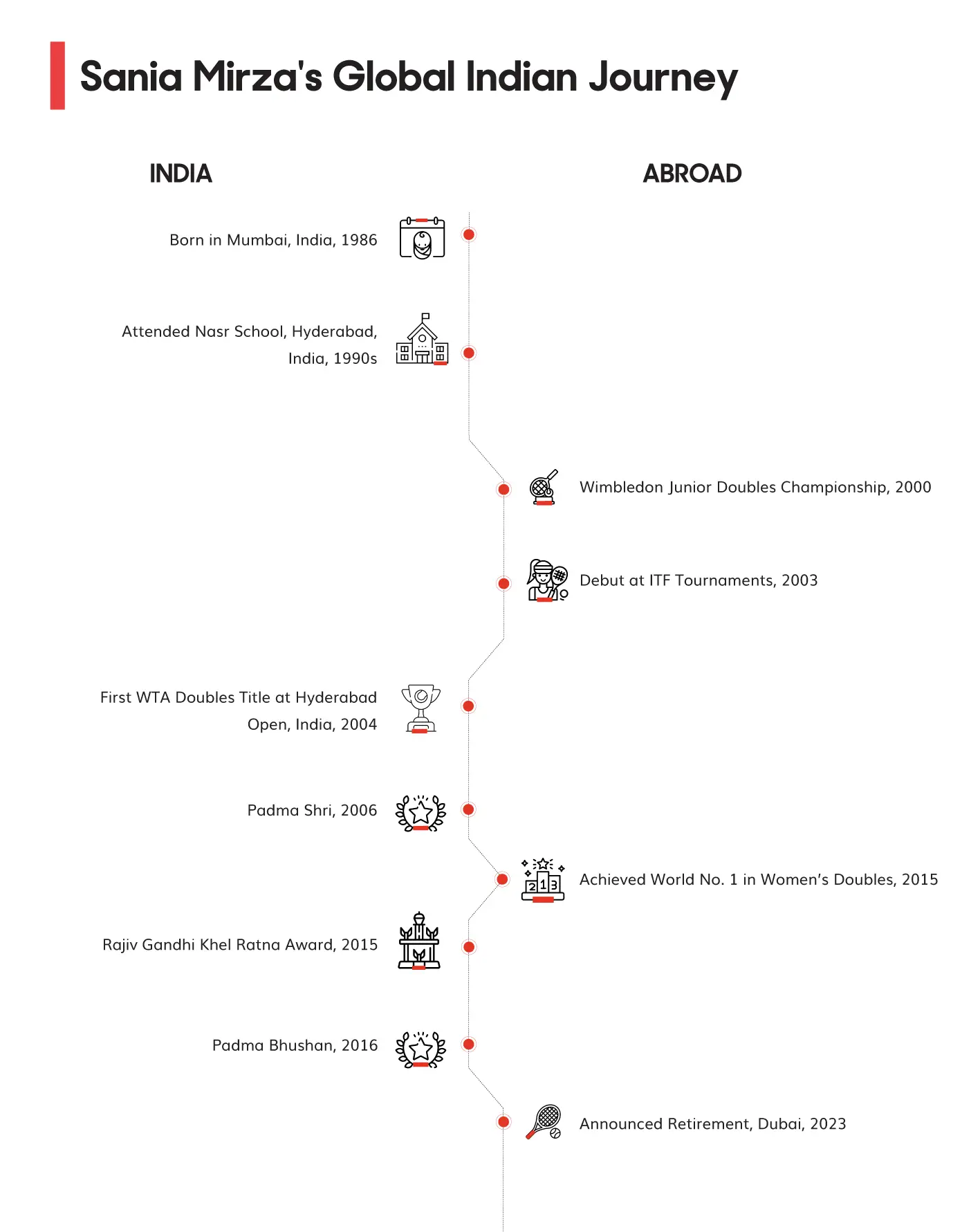
Breaking Barriers: Sania’s Rise in Singles Rankings
First Indian woman to break into WTA top 100
Groundbreaking achievement shaped Sania Mirza’s early professional career. She broke the glass ceiling for Indian women’s tennis in 2005. She became the first Indian woman to reach the WTA top 100 rankings. No female tennis player from the subcontinent had achieved this before. She also won her first WTA singles title in her hometown of Hyderabad. This made her the first Indian woman to win a singles WTA Tour title.
Historical context makes this feat even more remarkable. No Indian woman had reached such heights in professional tennis before Mirza. Her top 100 entry wasn’t just her victory. It changed Indian sports forever and inspired young girls across India to pick up tennis rackets and dream big.
Tournament performances kept getting better throughout 2005. Mirza reached the fourth round of the US Open and beat Marion Bartoli. She ended up losing to Maria Sharapova. Her Grand Slam run was a first for an Indian female tennis player. This showed she was truly breaking new ground in the sport.
Career-high ranking of 27 and notable victories
Rankings milestone arrived in August 2007. Sania reached world No. 27, her best singles ranking ever. No Indian player has topped this ranking in singles to this day. She climbed to this spot after strong showings in several tournaments. She played well on US hard courts and finished eighth in the 2007 US Open Series standings.
Major tournament appearances proved she could compete at the highest level. She made it to the second round of the Australian Open, French Open, and Wimbledon in 2007. This showed she could play well on different surfaces. The 2006 Australian Open saw her make history again. She became the first Indian woman seeded at a major tournament.
Impressive victories over top players showed Mirza’s talent as a singles player. Some of her best wins include:
- Beating then-No. 7 Svetlana Kuznetsova in Dubai in 2005 (6-4, 6-2)
- Taking down No. 9-ranked Nadia Petrova in San Diego in 2005
- Winning against No. 8-ranked Martina Hingis in Seoul in 2006
Additional achievements in singles saw her reach three WTA finals: Stanford in 2007, Pattaya City in 2009, and Forest Hills in 2005. She didn’t win a Grand Slam in singles, but her major tournament results stood out for a player from a country with basic tennis facilities.
Transition to doubles after wrist injury
Career-altering injury made Mirza rethink her tennis path. Her wrist kept giving her trouble and affected her singles career badly. Despite doing well in singles, these ongoing injuries pushed her to focus on doubles, which wasn’t as physically demanding.
Gradual transition to doubles started as she tried to work around her injury while staying professional. She played both singles and doubles at first, but her wrist made it hard to keep playing high-level singles.
Final singles chapter ended in 2012 at Eastbourne, her last singles event. From 2013, she played doubles only. This choice ended her singles career but led to even bigger success in doubles.
Professional view came straight from Mirza: “I was not number one but I was top-30 which has not happened from our side of the world in a very long time”. She felt proud of her singles achievements while knowing her legacy would grow beyond just her singles ranking.
Strategic move to doubles turned out perfectly. Mirza became world No. 1 in doubles, won multiple Grand Slams, and became one of tennis’s best doubles players ever. She showed she still had it when she came back after 27 months away in 2020 and won the Hobart International title.
Reaching the Summit: Sania Mirza’s Doubles Dominance
Partnership with Martina Hingis and world No. 1 ranking
Historic partnership started in March 2015 as Sania Mirza teamed up with Swiss legend Martina Hingis. Fans gave their doubles team the affectionate nickname “Santina”. The pair expressed amazing chemistry right away. Hingis remarked, “From the start we hit it off. Our games complement each other”. This partnership would revolutionize both players’ careers, especially Mirza’s already impressive achievements.
World No. 1 achievement came quick to Sania Mirza. She claimed the top spot in the WTA doubles rankings on April 13, 2015. She became the first Indian woman to reach world No. 1 in singles or doubles. Her victory at the Family Circle Cup in Charleston with Hingis helped her accumulate 7,660 points, surpassing Italy’s Sara Errani’s 7,640 points. Before this, all but one of these Indian tennis players, Leander Paes and Mahesh Bhupathi, had reached the world No. 1 ranking.
Remarkable longevity showed in Mirza’s reign. She managed to keep the world No. 1 position for 91 weeks. This ranks as the sixth-highest streak in the Open Era. On top of that, she held her top spot for almost 21 straight months before dropping down in January 2017.
Grand Slam success and 41-match winning streak
Grand Slam dominance marked the Mirza-Hingis partnership as they won three major titles back-to-back. They grabbed their first Grand Slam at Wimbledon 2015. The pair beat the Russian duo of Ekaterina Makarova and Elena Vesnina 5-7, 7-6(4), 7-5 in a close final. Mirza became the first Indian to win a women’s doubles major. They kept their momentum going at the 2015 US Open. The pair defeated Australia’s Casey Dellacqua and Kazakhstan’s Yaroslava Shvedova 6-3, 6-3 without losing a set. They completed their Grand Slam hat-trick with a win at the 2016 Australian Open.
Unprecedented winning streak put Mirza and Hingis among tennis history’s most dominant doubles teams. Starting at the 2015 US Open, they won 41 matches in a row. This amazing run included nine tournament titles straight. Their streak ended in February 2016 at the Qatar Open quarterfinals. Russian pair Elena Vesnina and Daria Kasatkina beat them 2-6, 6-4, 10-5. They came close to the record of 44 straight wins set by Jana Novotna and Helena Suková in 1990, missing it by just three matches.
Professional parting happened in August 2016 after 16 months together. The pair agreed to team up one last time for the WTA Finals in Singapore. Their joint statement said it was “a totally professional decision based purely on our recent results”. During their partnership, “Santina” collected 14 titles. They are now considered one of the greatest women’s doubles pairs in the Open Era.
Olympic appearances and mixed doubles achievements
Olympic trip covered four Games for Sania Mirza. She became the first woman from India to compete in four Olympics. She started at Beijing 2008, playing both singles and doubles. She teamed up with Leander Paes in mixed doubles at London 2012. They reached the quarterfinals before losing to Victoria Azarenka and Max Mirnyi, who won gold. Her best Olympic showing came at Rio 2016. She and Rohan Bopanna made it to the mixed doubles semifinals but missed a medal after losing the bronze match to Czech pair Lucie Hradecka and Radek Stepanek.
Mixed doubles success added by a lot to Mirza’s Grand Slam collection. She won three mixed doubles titles at major tournaments. Her first Grand Slam victory came at the 2009 Australian Open with fellow Indian Mahesh Bhupathi. This win made her India’s first woman to claim a Grand Slam title. She also won the 2012 French Open with Bhupathi and grabbed the 2014 US Open with Brazil’s Bruno Soares.
Impressive statistics show Mirza’s doubles dominance throughout her career. She won 43 WTA doubles titles along with six Grand Slam championships. Her achievements earned her recognition as “by far, the finest women’s tennis player India has produced”. Her switch to doubles, which started because of wrist injuries, ended up bringing her greatest tennis achievements and secured her legacy in the sport.
Beyond the Trophies: Sania Mirza’s Impact on Indian Tennis
Inspiring a generation of young players
Mirza’s legacy reaches way beyond her impressive collection of trophies. She humbly stated, “If I was able to inspire even one mother to go back and pursue her dreams, then I have done my job”. Her influence touches countless lives. Indian wrestling star Vinesh Phogat thanked Mirza “for teaching an entire generation of young Indian girls how to dream,” and cricketer Smriti Mandhana called her an “inspiration for many to pick up a sport and champion it”.
Personal testimonials show Mirza’s deep influence on current players. India’s top singles player Ankita Raina remembers a defining moment – watching a 12-year-old Mirza face Serena Williams at the 2005 Australian Open. “It was a big thing for Indian tennis. What I picked up watching that news was that I too wanted to play in that arena one day”. A young talent, 14-year-old Aishwarya Jadhav from Kolhapur learned about Mirza through her father who told her she was “the only one who has achieved so much in singles and doubles”.
Geographical reach shows Mirza’s influence in every corner of India. Lenien Jamir grew up in Nagaland “surrounded by people asking if I was going to be the next Sania.” She later moved to Assam for better training. Jamir adds, “Even if people in the Northeast did not know much about tennis, they surely knew Sania and equated tennis with her”.
Changing the perception of women’s tennis in India
Cultural transformation started with Mirza breaking established norms. She promotes women’s empowerment in a nation where “girls from our part of the world have to overcome cultural and religious barriers”. Mirza points out, “As women, we are given a long list of things that we can’t do, as opposed to being encouraged to go and follow our dreams”.
Sports landscape shift emerged through her success. Mirza notes, “India is not a sports nation but a cricketing nation”. Her achievements helped broaden the sports culture. The All India Tennis Association made a landmark decision in 2012, following her suggestion, to equalize prize money between men’s and women’s singles national champions – a practice that continues today.
Advocacy role shapes her post-playing career. She took up a mentorship position with Royal Challengers Bangalore in the Women’s Premier League. She explains: “The kind of pressure I’ve faced in the last 20 years, they want me to help these girls cope with the sudden spotlight they’ve been put under”.
Development of tennis infrastructure and academies
Academy foundation took root in March 2013 with Mirza’s tennis academy (SMTA) in Hyderabad. SMTA wants to “provide world class tennis training to Indian tennis players and aspirants”. The academy now includes two more facilities in Dubai.
World-class facilities at SMTA feature:
- Nine plexi-paved tennis courts of Grand Slam standard
- A fully equipped gymnasium for physical training
- Separate dressing rooms with showers for male and female players
- A clubhouse with lounge and cafeteria
Inclusive vision stands at the heart of the academy’s mission. SMTA “recognizes rural and underprivileged talent, and selected players are trained at zero expense”. This commitment makes the academy “a hub for the next generation of Indian tennis stars, helping them compete on the global stage”. Mirza identified a crucial need: “Tennis infrastructure in India needs serious attention and people should start believing in the ability of players if they want India to make a mark at international level”.
Overcoming Challenges: The Resilience of Sania Mirza
Battling injuries throughout her career
Physical setbacks disrupted Sania Mirza’s tennis experience from the start of her career. A serious wrist injury made her change her focus from singles to doubles. Her wrist problems in 2008 forced her to pull out of major tournaments, including the French Open and US Open. She went through surgery for a right knee injury in 2007 when she was at her singles career-high ranking. These constant health issues repeatedly broke her momentum at crucial points in her career.
Recovery struggles became harder as time passed. A tendon injury in her arm made her delay retirement plans in 2022. “It’s been more than a month. I’ve torn my tendon and it’s detached a bit from the bone. So it’s very painful,” Mirza said. The rehabilitation process proved challenging. “After four and a half weeks, when I thought I should’ve started hitting balls, I’m still unable to pick up a water bottle without pain”.
Facing criticism and controversies
Cultural backlash marked Mirza’s career path. Religious authorities issued a fatwa against her because she wore short tennis skirts on court. She faced accusations about disrespecting India’s flag when her feet supposedly came close to touching it during an event. She managed to keep her composure through these controversies and stayed focused on her sporting goals.
Political controversy surfaced in 2014 after her appointment as Telangana’s brand ambassador. BJP leader K Laxman labeled her “daughter-in-law of Pakistan” because of her marriage to Pakistani cricketer Shoaib Malik. Mirza responded with conviction: “I am an Indian, who will remain an Indian until the end of my life”.
Balancing motherhood and professional tennis
Transformative comeback marked Mirza’s post-pregnancy career. She gave birth to son Izhaan in 2018 and made a spectacular return to tennis in 2020 by winning the Hobart International women’s doubles title. This victory came after an incredible physical transformation—she lost 26 kilograms in just four months after her pregnancy.
Motherhood insights changed her viewpoint about tennis. “Pregnancy and having a baby made me a better person,” Mirza shared. She acknowledged the difficulties openly: “The mother’s guilt is real. And no matter how much we give, we always feel like we’re not doing enough”. Her story continues to inspire others. “One of the reasons to make this comeback was to tell women that you can follow your dreams”.
Life After Retirement: Sania Mirza’s Continuing Influence
The Sania Mirza Tennis Academy
Educational vision shapes Sania Mirza’s life after retirement, especially through her tennis academies. She opened her first academy in Hyderabad in 2013 and later headed over to Dubai in September 2022, just before her official retirement. The Sania Mirza Tennis Academy (SMTA) boasts world-class facilities with 10 courts (4 clay, 6 hard) that feature LED lights, plus gymnasiums and video analysis teams. SMTA worked with the Dubai Sports Council to launch the Dubai Open for Tennis Academies Tournament in December 2023. The tournament brought together more than 200 players from 40 academies.
Training programs at SMTA meet the needs of players from all age groups. The academy launched “Step One To Be A Champ,” a five-day tennis camp that offers expert coaching and individual-specific attention to players of all skill levels. The academy also helps talented underprivileged players by training them at no cost. Mirza believes that “Our goal is to provide a fun and engaging environment where players can develop their skills and passion for the sport”.
Mentoring upcoming talent
Coaching philosophy reaches beyond her academy walls. Mirza guides promising players like Karman Thandi, who ranks around 250 globally. Her mentoring role expanded to cricket when Royal Challengers Bangalore chose her as their mentor for the Women’s Premier League. Speaking about this new chance, Mirza said: “I want to make young girls believe sport can be one of the first career choices for them… The mental aspect of it is something I look forward to working with the younger girls”.
Family involvement shows through her father Imran Mirza’s work with players like Theertha Shashank. He spotted “a special spark” in Shashank and now helps shape the young player’s game while fixing weaknesses. This mentoring style reflects the academy’s core mission to develop India’s next generation of tennis stars.
Business ventures and brand endorsements
Entrepreneurial pursuits complement Mirza’s tennis initiatives. She worked with SeeSaw Spaces in January 2024, a Hyderabad-based children’s center that focuses on child development through creative play zones, fitness programs, and a family café. Mirza sees these business ventures as “another dream” and credits her sports background for giving her advantages in discipline, resilience, and time management.
Brand partnerships continue to thrive after retirement. Mirza’s Instagram following exceeds 12 million, and she represents brands like Hershey’s, Asian Paints, and Danube Properties. Her endorsement portfolio grew in 2023 with Sony Sports Network (as Tennis Ambassador), Bengaluru SG Mavericks, and Centuary Mattress. These deals add to her estimated net worth of INR 210 crore, with her brand endorsement fees ranging between 60-70 lakhs each.
Giving Back
Sania Mirza has not only made significant contributions to tennis but also demonstrated a deep commitment to giving back to society. In 2013, she founded the Sania Mirza Tennis Academy in Hyderabad, aiming to nurture young talent and provide world-class training facilities for aspiring tennis players in India. Her academy has become a hub for the next generation of Indian tennis stars, helping them compete on the global stage.
Beyond sports, Sania has actively supported social causes, including women’s empowerment and education. She has worked with organizations to promote gender equality and is a strong advocate for breaking societal stereotypes. Sania frequently uses her platform to inspire young girls to pursue their dreams despite challenges. Additionally, her philanthropic efforts include charity matches and collaborations with initiatives focused on child welfare and health, making her a role model both on and off the court.
Key Takeaways
Breaking Barriers
Sania Mirza’s journey highlights the power of resilience and determination in breaking societal and cultural barriers. As one of the first Indian women to achieve global success in tennis, she proved that excellence in unconventional fields is achievable with hard work.
Pioneering Spirit
By achieving milestones like being the first Indian woman to win a WTA singles title and attaining the World No. 1 doubles ranking, Sania paved the way for future generations of Indian athletes, especially women, in tennis and other sports.
Balancing Success with Responsibility
Sania exemplifies how to balance a highly successful career with giving back to society. Her efforts to nurture young talent through her tennis academy and her advocacy for women’s empowerment underscore her commitment to making a lasting impact.
Overcoming Challenges
Sania faced numerous challenges, including injuries, societal scrutiny, and the pressures of representing India on a global stage. Her ability to reinvent herself by transitioning from singles to doubles highlights her adaptability and perseverance.
Inspiration Beyond Sports
More than her accolades, Sania’s legacy lies in her role as a symbol of empowerment, breaking stereotypes, and inspiring millions to dream big. Her story is a testament to the fact that with dedication and courage, one can achieve greatness and inspire others to follow suit.
Global Indian Impact Analysis
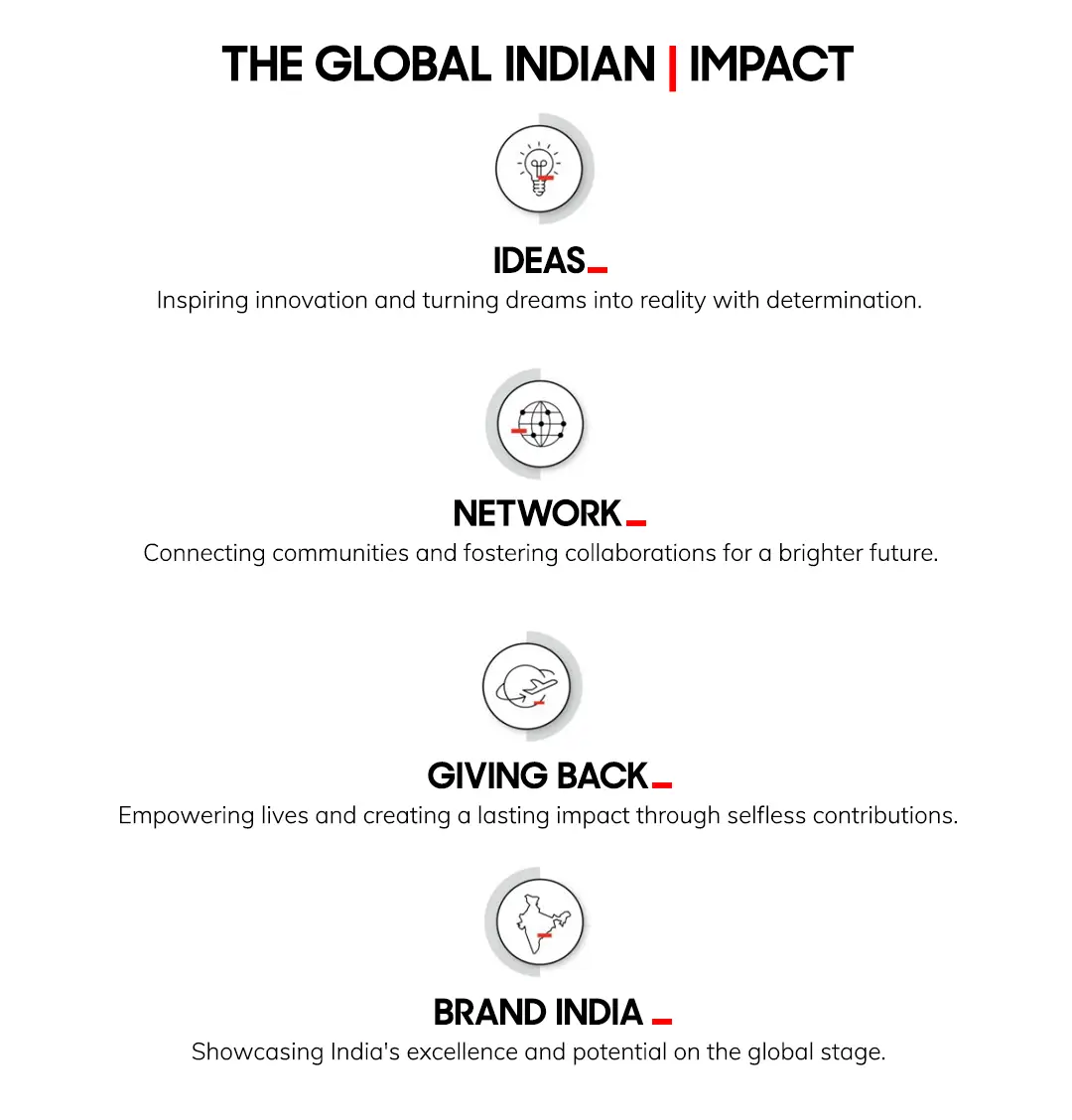
Also Read: Journey of PV Sindhu, Pullela Gopichand
FAQ:
Who is Sania Mirza's husband?
How old is Sania Mirza?
Has Sania Mirza won an Olympic medal?
What is Sania Mirza’s net worth?
What religion does Sania Mirza follow?
What is the latest news about Sania Mirza?
What awards has Sania Mirza won?
- Padma Shri (2006): India’s fourth-highest civilian award.
- Rajiv Gandhi Khel Ratna (2015): India’s highest sporting honor.
- Padma Bhushan (2016): India’s third-highest civilian award.
- Arjuna Award (2004): For excellence in sports.
Sania has also been named in Time Magazine’s 100 Most Influential People (2016). These accolades recognize her contributions to Indian sports and her role in inspiring future generations. Her success story continues to inspire countless aspiring athletes in India and around the world.




